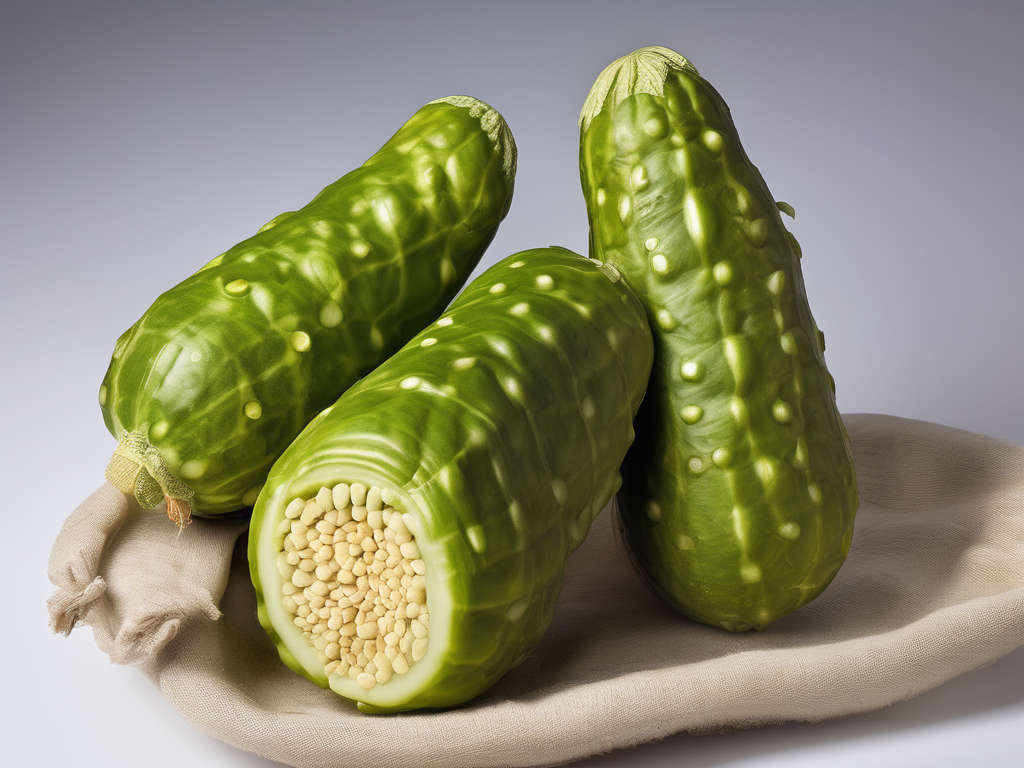
How to Properly Store Bitter Gourd to Prevent Mold Growth
Get Your Free Food Safety Cheat Sheet
30 most common foods with instant answers. Print it and stick it on your fridge—completely free!
How to Properly Store Bitter Gourd to Prevent Mold Growth
Bitter gourd, also known as bitter melon, is a popular vegetable in many cuisines due to its unique bitter taste and numerous health benefits. However, improper storage can lead to mold growth, making the vegetable inedible and potentially harmful. In this comprehensive guide, we will explore the best practices for storing bitter gourd to maintain its freshness and prevent mold growth. (Bitter gourd)
Understanding Bitter Gourd
Before delving into storage methods, let's first understand the characteristics of bitter gourd. Bitter gourd is a tropical vegetable with a rough, bumpy skin and a vibrant green color. It is rich in vitamins, minerals, and antioxidants, making it a valuable addition to a healthy diet. Bitter gourd is commonly used in stir-fries, curries, and soups for its distinct flavor.
Key Points about Bitter Gourd:
- High water content
- Susceptible to mold growth
- Bitter taste mellows when cooked
Now, let's move on to the essential tips for storing bitter gourd to ensure its freshness and safety.
Proper Storage Techniques
1. Choose Fresh Bitter Gourd
- Select bitter gourds that are firm, without any soft spots or blemishes.
- The skin should be bright green and free from wrinkles.
2. Store in a Cool, Dry Place
- Bitter gourd should ideally be stored in a cool, well-ventilated area away from direct sunlight.
- Avoid storing bitter gourd in areas with high humidity, as moisture can promote mold growth.
3. Use Perforated Plastic Bags
- Place bitter gourds in perforated plastic bags to allow for air circulation.
- Do not seal the bags completely, as trapped moisture can lead to mold formation.
4. Refrigerate if Needed
- If you live in a warm climate or plan to store bitter gourd for an extended period, refrigeration is recommended.
- Place bitter gourd in the vegetable crisper drawer of the refrigerator.
5. Avoid Washing Before Storage
- Do not wash bitter gourd before storing, as moisture can accelerate spoilage.
- Wash bitter gourd just before using it in your recipes.
Safety Precautions
1. Check for Mold Regularly
- Inspect stored bitter gourd regularly for any signs of mold growth.
- If you notice any mold, discard the affected bitter gourd to prevent contamination.
2. Practice Good Hygiene
- Wash your hands before handling bitter gourd to prevent the transfer of bacteria.
- Use clean cutting boards and knives when preparing bitter gourd.
3. Follow Proper Food Handling Guidelines
- Store bitter gourd away from raw meat, poultry, and seafood to prevent cross-contamination.
- Cook bitter gourd thoroughly to eliminate any potential bacteria.
Conclusion
Proper storage of bitter gourd is crucial to maintain its freshness and prevent mold growth. By following the tips outlined in this guide, you can ensure that your bitter gourd stays safe for consumption and retains its nutritional value. Remember to choose fresh bitter gourd, store it in a cool, dry place, and check for mold regularly. By incorporating these practices into your routine, you can enjoy delicious and healthy bitter gourd dishes with peace of mind. [Learn more about bitter gourd here](/food/bitter gourd). (Bitter gourd)
Related Posts
Here are some other articles you might find helpful:
Authoritative Food Safety References
These agencies and university labs inform every tip and health precaution we publish.
USDA FoodKeeper – Cold Storage Guidelines
Official refrigerator, freezer, and pantry timelines maintained by the U.S. Department of Agriculture.
Visit USDA FoodKeeperFDA Produce Safety Rule & Grower Guidance
Field-to-fridge handling practices that prevent contamination of fruits, vegetables, and leafy greens.
Visit FDA Produce SafetyCDC Foodborne Illness Prevention Hub
Surveillance-backed guidance on pathogens, symptoms, and steps to reduce foodborne illness risk.
Visit CDC Food SafetyUC Davis Postharvest Technology Center
University research detailing optimal storage atmospheres for produce after harvest.
Visit UC Davis PostharvestPenn State Extension – Home Food Preservation & Safety
Peer-reviewed extension bulletins on safe canning, chilling, and reheating practices.
Visit Penn State ExtensionGet Your Free Food Safety Cheat Sheet
30 most common foods with instant answers. Print it and stick it on your fridge—completely free! Want more? Upgrade to the complete guide with 70+ foods.
Scan your food directly and get instant safety info using our AI-powered camera feature.